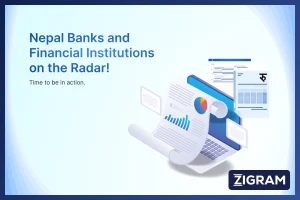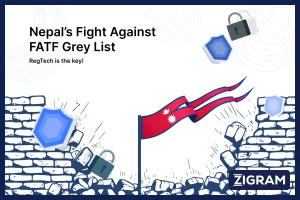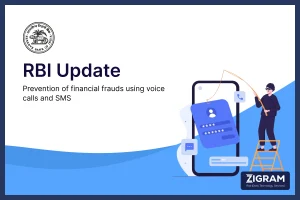In 2024, transaction monitoring is more important than ever. Financial crimes like money laundering and fraud are becoming increasingly sophisticated, necessitating advanced detection and prevention measures. Regulatory bodies have raised the bar, requiring robust monitoring systems to ensure compliance and avoid hefty penalties. Technological advancements in AI and machine learning have revolutionized these systems, allowing for real-time detection of suspicious activities.

With the surge in cyberattacks and digital fraud, it’s critical to have strong safeguards to protect sensitive financial information. As financial services become more globalized, monitoring ensures the integrity of cross-border transactions. Additionally, the rise of new financial services such as cryptocurrencies and decentralized finance calls for stringent monitoring to prevent misuse and maintain market trust.
What Is Transaction Monitoring (TM) In AML/CFT?
Transaction Monitoring (TM) is a critical process used by financial institutions to detect and halt money laundering operations through the meticulous analysis of financial transactions. This involves using sophisticated software to scan and analyze extensive amounts of financial transaction data, including bank transfers, credit card payments, customer transactions, and other financial activities. The primary objective is to identify patterns and irregularities that could indicate money laundering or other financial crimes, such as fraud or terrorist financing.
Why Is Transaction Monitoring In AML/CFT Important?

Transaction monitoring is pivotal for financial institutions aiming to combat financial crimes such as money laundering and terrorist financing. Implementing robust AML transaction monitoring systems, whether in-house or through outsourcing, is essential for:
- Detecting and Reporting Suspicious Activities
- Preserving the Institution's Reputation
- Complying with Regulatory Obligations
Key Benefits Of Effective Transaction Monitoring
☑️ Rapid Detection of Suspicious Activities:
Through advanced analytics and machine learning algorithms, these systems can quickly identify patterns indicative of money laundering, such as large or irregular transactions, without the need for manual reviews.
☑️ Reducing Risks:
By promptly flagging and reporting suspicious transactions, financial institutions can take necessary actions to mitigate risks.
☑️ Maintaining Integrity and Public Confidence:
AML transaction monitoring plays a crucial role in safeguarding the financial system's integrity, thus maintaining public trust in financial institutions.
Who Needs Transaction Monitoring?
- Banks and Financial Institutions use transaction monitoring systems to detect and prevent money laundering, terrorist financing, fraud, and other financial crimes, ensuring regulatory compliance and financial integrity.
- Payment Processors and FinTech Companies monitor transactions to identify fraudulent activities, unauthorized transactions, and other suspicious behaviors that could harm their customers or business.
- Insurance Companies use transaction monitoring to detect and prevent fraud. Analyzing claims data and transaction patterns helps identify suspicious activities such as fraudulent claims or unusual payment patterns.
- Retailers and E-commerce Platforms use it to protect against fraudulent transactions, unauthorized access, and payment card fraud by identifying and blocking suspicious transactions in real-time.
- Government Agencies use transaction monitoring to investigate financial crimes, enforce regulations, and track illicit activities. This helps detect money laundering, tax evasion, and other illegal activities.
- Healthcare Organizations can identify fraudulent billing practices and other financial crimes, ensuring the integrity of billing data and transaction patterns.
- Cryptocurrency Exchanges monitor transactions to detect and prevent money laundering, fraud, and other illicit activities involving digital currencies, ensuring regulatory compliance and market integrity.
How Does Transaction Monitoring Work In AML/CFT?
For banks and other fintech organizations, this works by having software monitor all transactions and flag all those that exceed a certain threshold for investigation, which often involves manual review. Additionally, the system ascertains that customers are not on PEP or sanctions lists. If anything seems suspicious after this, the bank ought to file a suspicious activity report (SAR).
What Are The Steps In Transaction Monitoring?
The transaction monitoring process involves several detailed steps to effectively detect and manage suspicious activities:
1. Data Collection:
Gather data from various sources, including customer accounts, transaction records, and external databases. This data includes customer information, transaction details (amount, date, recipient), and contextual information (location, frequency).
2. Data Integration and Normalization:
Integrate data from different sources into a unified system, then normalize it to ensure consistency and accuracy for easier analysis.
3. Initial Screening:
Apply initial filters to identify clearly benign transactions (e.g., small amounts, regular bill payments). Cross-reference transactions against blacklists and watchlists (e.g., sanctioned entities, known fraudsters).
4. Rule-Based Analysis:
Use predefined rules based on regulatory requirements and known fraud patterns. Implement thresholds for transaction amounts or frequencies; exceeding these thresholds triggers alerts.
5. Advanced Analytics:
Employ algorithms to recognize complex patterns indicating suspicious activity. Use machine learning models to adapt from transaction data, improving detection and analyzing customer behavior to identify deviations from normal activity.
6. Suspicious Activity Detection:
Generate alerts when a transaction deviates from established norms or matches suspicious patterns.
7. Regulatory Reporting:
Report confirmed suspicious activities to relevant regulatory authorities, such as filing Suspicious Activity Reports (SARs). Maintain internal records of reported transactions for audit and compliance purposes.
This comprehensive, multi-layered approach helps financial institutions effectively safeguard against fraud and comply with regulatory requirements.
What Is The Difference Between Transaction Screening And Transaction Monitoring?
Payment screening is the process of vetting payments against watchlists before they enter the system, aiming to stop suspicious activity upfront. Transaction monitoring, on the other hand, is the process of continuously analyzing payments for unusual patterns that could signal financial crimes.
Techniques Used In Transaction Monitoring
Challenges In Transaction Monitoring
- False Positives: High volumes of false positives can overwhelm compliance teams and lead to inefficiencies.
- Evolving Threats: Criminals continuously adapt their methods, making it challenging to keep monitoring systems up to date.
- Data Quality and Integration: Ensuring accurate and comprehensive data from various sources can be difficult.
- Regulatory Changes: Keeping up with constantly changing regulations requires continuous updates to monitoring systems.
Enhancing Transaction Monitoring With ZIGRAM’s Transact Comply
- Pattern Recognition: Algorithms identify suspicious activities by analyzing transaction data for anomalies or irregularities.
- Threshold Monitoring: Predefined thresholds for transaction parameters trigger alerts for further investigation.
- Behavioral Analysis: Historical data establishes customer behavior patterns to detect deviations indicating potential fraud.
- Peer Group Analysis: Compares individual behavior to similar cohorts, flagging significant deviations for scrutiny.
- Link Analysis: Identifies relationships between entities to uncover complex illicit activity networks.
- Machine Learning and AI: Adaptive technologies enhance detection capabilities in real-time.
- Geospatial Analysis: Examines transaction data based on geographic locations for additional scrutiny.
- Customer Risk Profiling:Assigns risk scores based on transaction history and demographic information.
- Integration of External Data Sources: Incorporates external data to enhance detection and ensure compliance.
- Real-Time Monitoring and Alerts: Detects suspicious activities instantly and triggers immediate alerts for action.
ZIGRAM offers advanced technological solutions and expertise to help businesses detect and prevent financial crimes. Through innovative software platforms, ZIGRAM provides real-time monitoring capabilities, leveraging AI and ML algorithms to analyze vast amounts of transactional data for anomalies and suspicious patterns. ZIGRAM’s customizable solutions are tailored to meet specific regulatory requirements, ensuring effective compliance and risk management. By partnering with ZIGRAM, companies can enhance their transaction monitoring capabilities, mitigate financial risks, and safeguard their operations and reputation in an increasingly complex financial landscape.
In summary, effective transaction monitoring is indispensable for financial institutions aiming to combat fraud, comply with regulations, and maintain customer trust. Despite the challenges, advancements in technology and analytics offer powerful tools to enhance monitoring capabilities. As the financial landscape evolves, the importance of robust transaction monitoring cannot be overstated.
- #TransactionMonitoring
- #FraudDetection
- #SAR
- #TransactionReport






